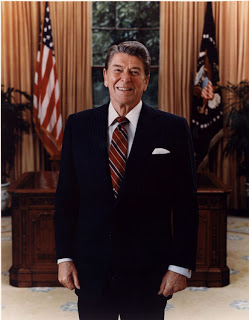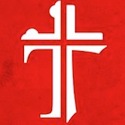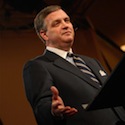Over the past two weeks I’ve been reading through Richard Reeve’s, President Reagan. Reeve is an accomplished presidential biographer. While no friend to Reagan’s political philosophy, Reeve does paint a more objective picture than many of the former president’s detractors.
Typically when I am reading a presidential biography I am mostly on the hunt for the habits that mark his leadership style. Here are a few I have marked in regard to his first term:
From the Introduction
Reagan had the virtues and failings of an old man: He already knew what he wanted to know, he was set in his ways, stubborn, and he did not generally care what journalists or the hired help thought of him. He was not obsessed by history, as were Kennedy and Nixon (xiii).
A note Reeves marked in Calvin Coolidge’s autobiography that Reagan read while in the White House: “In the discharge of the duties of the office there is one rule of action more important than all others. It consists in never doing anything that some one else can do for you” (xiii).
I do not subscribe to the many theories of Reagan’s passivity. It is true that much of any presidency is essentially reactive, dealing with crises unpredictable and unanticipated-strikes, bombings, market crashes, revolutions, plagues – but the President Reagan I found in the course of my research was a gambler, a bold, determined guy (xiv).
I do not think Reagan was an unwitting tool of a manipulative staff. Quite the opposite (xv).
He knew how to be President. The job does not pay by the hour. Presidential naps don’t endanger the country or the world. And Reagan’s ignorance of detail and his many blunders did not change the way people felt about him as a leader (xvi).
From the Body of the Book
The old actor was staff-dependent but not staff-driven. He went where he was told to go – taking direction they called it in his old business – but possibly more than any politician of his time he said what he actually thought, often to a fault (13).
He was quite different from his recent predecessors – John F. Kennedy, Lyndon Johnson, Nixon, and Carter – not obsessed with what other people thought of him. He had been famous for most of his life outside politics and he felt no great need to know what the newspapers were saying about him or anything else each morning. He skimmed The New York Times and Washington Post each morning at breakfast – fruit or juice, bran cereal, and decaffeinated coffee. He looked at the Post first because the Times had no comics page, and that was where Reagan had begun his reading since he was a kid. Part of Meese’s job was shielding the President from most disagreement. When internal debate could not be avoided, Meese did what he had done when Reagan was governor: call a meeting and let the boss listen to the arguments of Cabinet members and senior officials. When disagreement rose, so did Meese, taking the disputants outside as Reagan waved and said, “right, fellas, you work that out and get back to me.”
Reagan intended to be a President of big things. Baker, Meese, and Deaver handled smaller things, the day-to-day, week-to-week stuff. “I have never seen this man enjoy himself as much as he has in the last few weeks,” said Deaver, who had worked for the Reagans for almost twenty years, in an interview with The New York Times.
The President was a clean-desk man. James Baker’s deputy, Richard Darman, Served as Reagan’s “In Box” and “Out Box.” When the President came down from the living quarters, his schedule for the day was there in a leather folder. He liked to draw a line through each appointment as it ended. Next to that were papers collected and compiled by Darman, most of them approved in advance by Baker. The documents, briefings, clippings, and memos were usually short and direct, light on numbers and other complexities. The papers and notes that Darman brought in late in the afternoon, usually at 5 P.M., for Reagan’s evening work at a small study upstairs – often he read them while watching television with his wife – where the same most of them summaries or talking points on a single page, or two at most.
Many of the pages waiting on Reagan’s desk each morning were “Recommended Telephone Call” memos. Usually the calls were to members of Congress: “Thank Lloyd for his support,” things like that, a dozen or so most days. The memos came back each evening marked, in the President’s handwriting, “Mission Accomplished, RR.” He arrived in the Oval Office each morning at nine o’clock or a few minutes after, had lunch with his wife upstairs in the living quarters, came back at two o’clock, and left before six each afternoon. Most days there was also morning and afternoon “staff time” – usually reading and writing letters, sometimes taking a nap. After supper, Darman would deliver a package of readings, placing them on a table upstairs. They were sorted in colored folders – red for “Classified,” green for “Action,” gray for speech material, blue for general information. Darman nodded to the Reagans sitting at opposite ends of a long couch, watching television, or tapes of the evening newscasts, or an old film, often munching popcorn. He tried to keep the reading material to an hour and a half, and the President methodically went through the folders, putting a small check or his initials on each document as he finished it (16).
A . . . perceptive analysis of his [Reagan’s] first hundred days was a quote in U.S. News & World Report by Edwin C. Hargrove, director of the Institute of Public Policy Studies at Vanderbilt University and author of a 1974 book titled the Power of the Modern Presidency: “Reagan has demonstrated in a way that Jimmy Carter never did, that he understands how to be President. He knows that a President can deal with only a relatively small number of issues at a time. He also understands that his principal task is public leadership . . . and developing a working relationship with Congress (62).
. . . when Reagan was asked about arguments between Secretary of State Haig and Secretary of Defense Weinberger, he described how he liked to work:
The whole Cabinet argues in front of me. That was the system I wanted installed. Instead of the traditional Cabinet meeting with each Cabinet member making a brief report on how things were going in his agency, I wanted this operation where I have the benefit of the thinking of all of them. . . . What we do is have an agenda, and it goes out on the table and the thing is that, when there’s been enough discussion and enough argument and I’ve joined in and I’ve heard enough, I make the decision (84).
Pro’s and Con’s to Reagan’s leadership habits?







